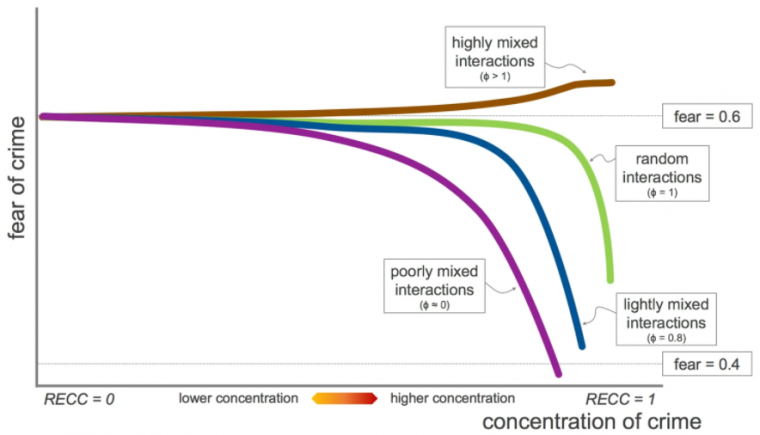There is often a mismatch between levels of crime and the fear of becoming a victim of crime. It is not uncommon to find individuals who suffer little or no crime but yet who are still fearful of some future crime. Alternatively, a place or region might see an increase in crime over time while the fear of crime remains unchanged. Building on a model that previously considered the fear of crime as an opinion shared by simulated individuals, here the impact that different distributions of crime have on the fear experienced by the population is analysed. Simulating the dynamics of the fear of individuals, along with changes of the distribution of crime, leads to results which show that fear is sensitive to the distribution of crime and that there is a phase transition for high levels of concentration of crime. A policy may be oriented to reduce crime, so that the population effectively suffers less crime, but if the victimisation is displaced to other individuals, then the perception of insecurity may not decrease, with fear becoming more widespread.
